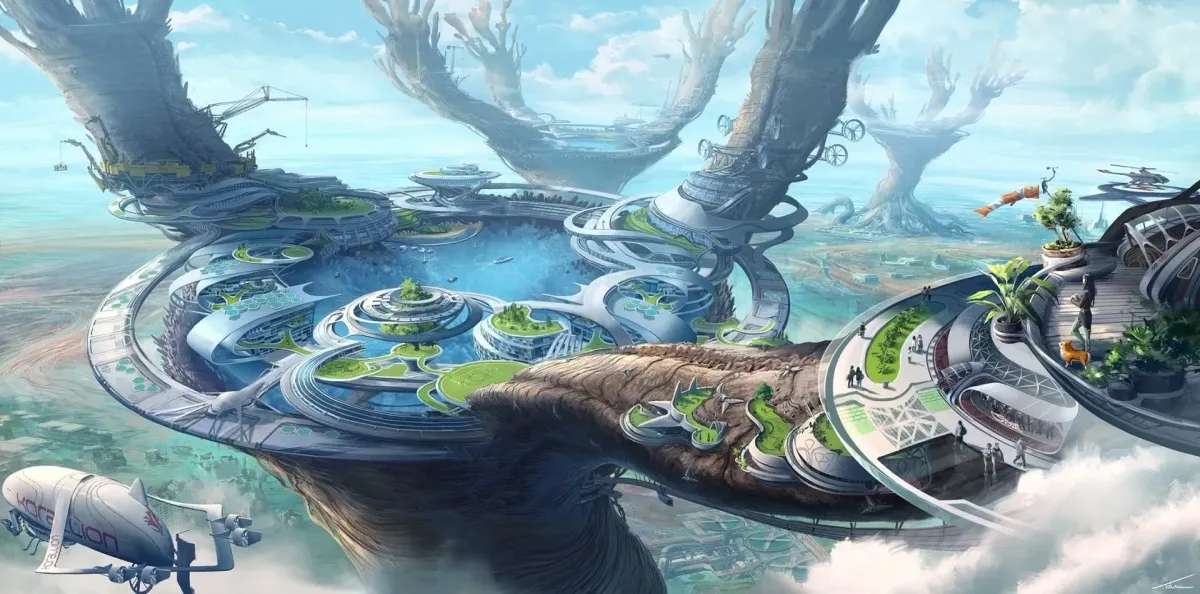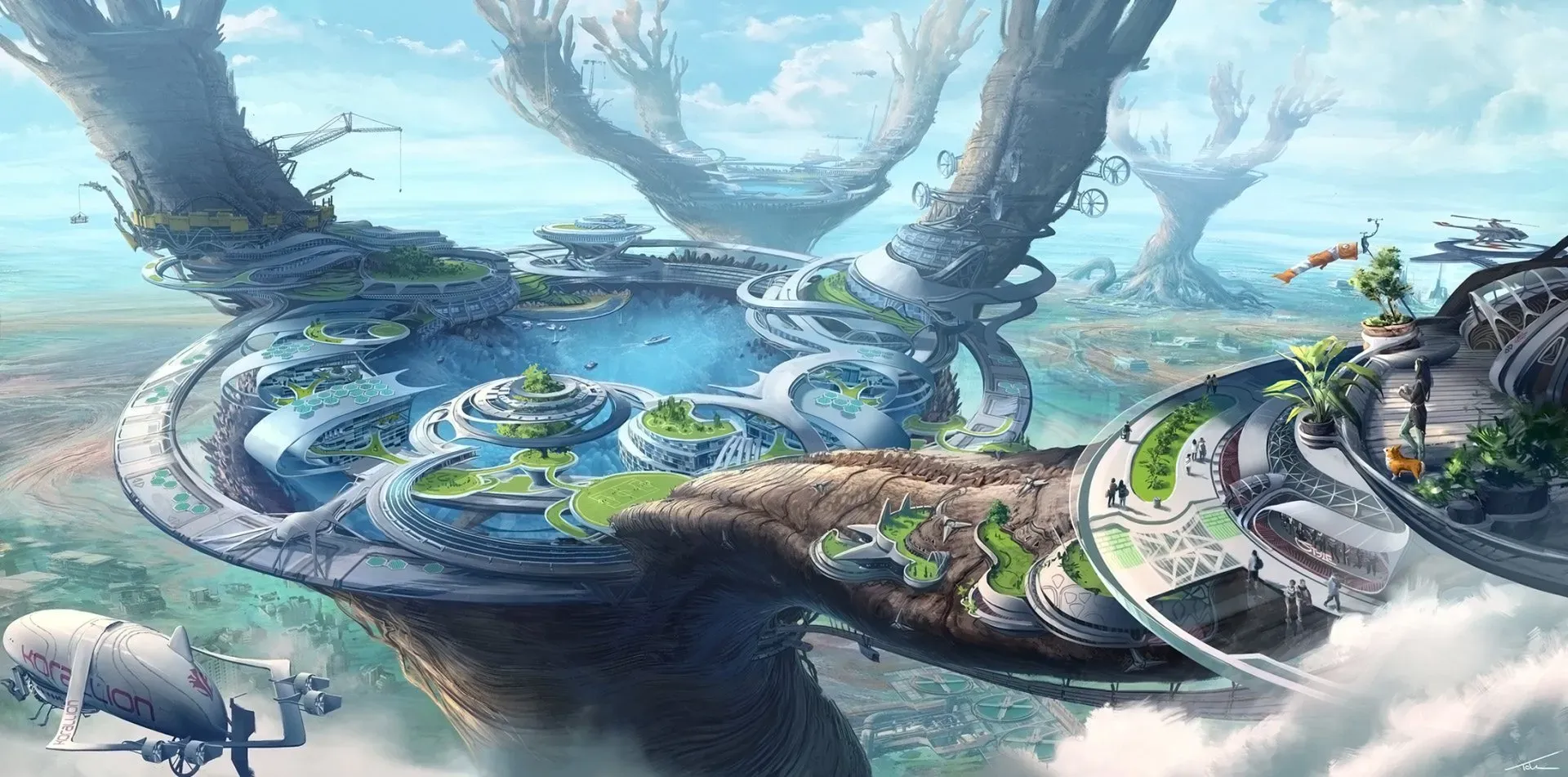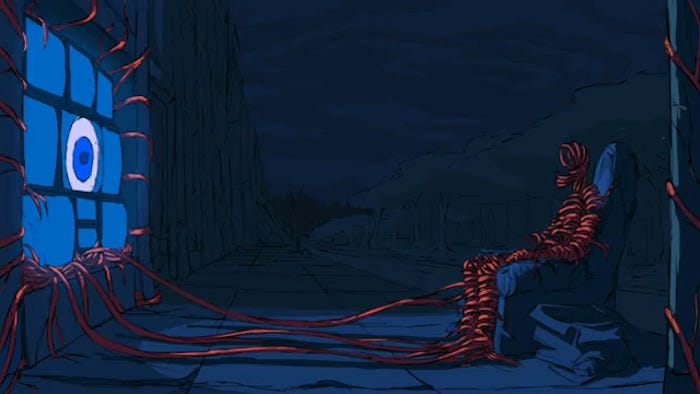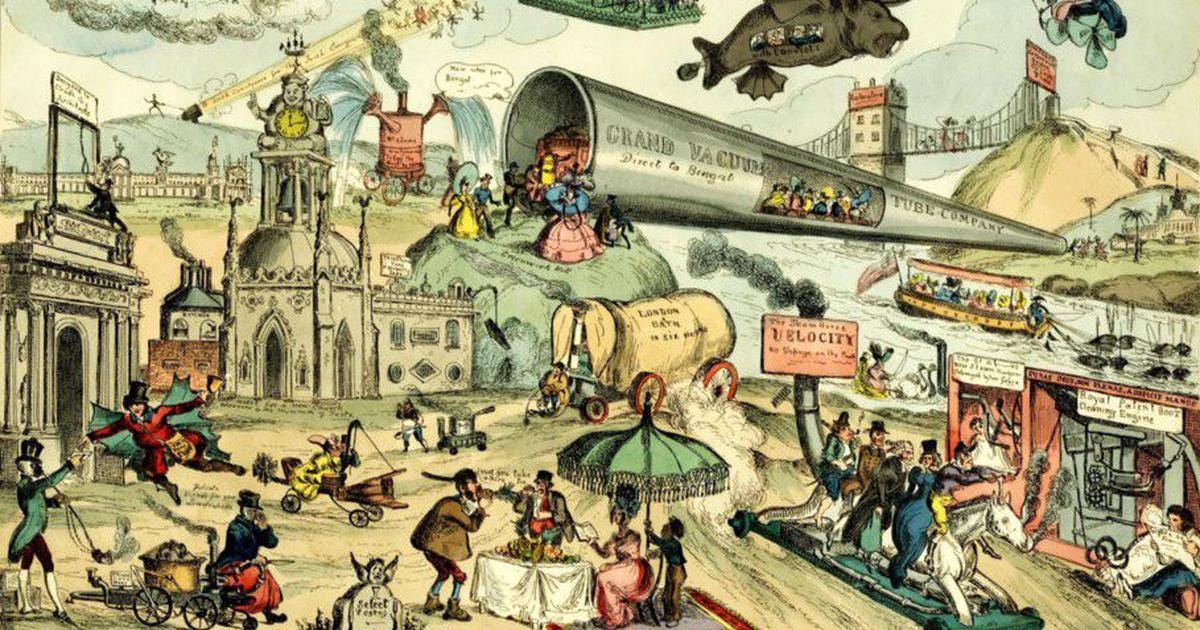Why Solarpunk, Not Cyberpunk, Is the Future We Need Right Now
You don’t need to be stoned in a dorm room to imagine a brighter future


This article original publushed via OneZero
It should be no surprise that I’m obsessed with science fiction. Considering that I’m both a graphic designer and work in cryptocurrency, it’s practically required that I pay homage to the neon-soaked aesthetics of Blade Runner 2049, have a secret crush on Ava from Ex Machina, and geek out over pretty much anything Neal Stephenson puts out.
However, with a once-theoretical dystopia now apparently on our doorstep, we should be considering the trajectory of our civilization now more than ever. Suddenly, the megacorps, oppressive regimes, and looming global crises don’t seem so distant anymore.
Our favorite works of science fiction are now becoming realities that are impacting our daily lives.
And here we are, wrestling with the implications of our new reality staring into our screens and trapped inside our homes like the characters in Ready Player One.

Recent events have put us at a bit of a crossroads. We have an opportunity in front of us to continue down this path, or use this crisis as a wake-up call to pivot our future toward a world that is more equitable, safe, and empowering for all. We are the heroes of our own journey right now.
And while the news might inform us, it’s our fiction that inspires us to imagine what is possible.
Our worldview and idea of what is possible are largely shaped by the media we consume. You are what you eat after all. And while the news might inform us, it’s our fiction that inspires us to imagine what is possible. Science fiction has always asked the big questions, while simultaneously preparing us for what may be around the corner.
Where are we heading?
What problems might we create for ourselves?
And wait… weren’t we promised flying cars?
Through captivating characters, suspenseful plots, and philosophical musings, we use fiction above all else to tell great stories and entertain. But there is another purpose, which is to inspire the next generation about what the human mind is capable of and to shape our future for generations to come.
How many engineers got their start after seeing Star Wars? How many interface designers were inspired by Minority Report? The iPad looks a lot like the tablet device in 2001: A Space Odyssey.
The world needs this vision more than ever. And while I love the dystopian vibes of cyberpunk aesthetics as much as anyone, is there another world we can create that inspires us (and the next generation) to manifest a more sustainable, equitable, and free future for all?
Enter Solarpunk
I’ve recently come across a lesser-known genre of science fiction called “solarpunk.” Like cyberpunk, it is a genre of speculative fiction wrapped in a signature aesthetic that paints a vision of the future we could create. The following definition from this reference guide summarizes it well:
Solarpunk is a movement in speculative fiction, art, fashion and activism that seeks to answer and embody the question “what does a sustainable civilization look like, and how can we get there?” The aesthetics of solarpunk merge the practical with the beautiful, the well-designed with the green and wild, the bright and colorful with the earthy and solid. Solarpunk can be utopian, just optimistic, or concerned with the struggles en route to a better world — but never dystopian. As our world roils with calamity, we need solutions, not warnings. Solutions to live comfortably without fossil fuels, to equitably manage scarcity and share abundance, to be kinder to each other and to the planet we share. At once a vision of the future, a thoughtful provocation, and an achievable lifestyle.
Apart from the clear aesthetic differences, a key difference here between solarpunk and cyberpunk is the emphasis on solutions, not warnings. It appears that solarpunk is not interested in exploring potential paths that may go wrong. Rather, it assumes that the problems are already here and focuses most of its energy on solutions and a path forward. The warnings of cyberpunk tap into the fear of what might happen, and uses that as a premise for creating plot tension. Solarpunk encourages us to accept the reality of the present and move forward by focusing on solutions to the problems at hand.
There are also some clear differentiators on how society is structured and depicted in the two genres.
️Cyberpunk:
- Economy dominated by large corporations.
- Environment is usually wrecked, oppressive.
- Powerful technology has created a wealth gap.
- Drugs used as an escape from reality.
- Man merging with machine.
- Always raining.
Solarpunk:
- Decentralized symbiotic economic structures.
- Living in balance with environment.
- Technology empowers the individual.
- Drugs used to expand consciousness and augment reality.
- Man working alongside machine.
- Sunny with a chance of showers.
A big difference here is how humanity chooses to harness the technology. Do we use it to evolve ourselves past our current biological form and catapult us toward merging with machines or do we show thoughtful restraint and use technology to bring us more in balance with our own biology and ecosystem?
This is the question for the ages, and yet I don’t think the answer has to be so black and white. In many ways, creating and using technology is the most natural thing that we can do as a species. The clean lines of an iPhone seem to contrast the squiggly lines of the raw materials it’s made of, but at the end of the day, it’s all a byproduct of an exploding supernova. As Carl Sagan put it, “We are made of star-stuff.”
We do not need to view technology as an alien phenomenon separating us from nature, but rather as an emergent phenomenon and inevitable byproduct of all natural systems.
It’s not productive to pretend that things will magically fall into place if we put out the right vibes into the universe.
Solarpunk ideas remind us that there is a path forward in which we can have our cake and eat it too. We can embrace the exponential rise of our understanding and control over the universe while using that knowledge to ensure that we do not destroy our environment, society, and ourselves in the process.
Now I know what you might be thinking because I am right there with you. Is this too good to be true? Maybe. Is reality likely to play out this peacefully? Unlikely. Should that stop us from trying? No.
It’s called speculative fiction for a reason. It’s not productive to pretend that things will magically fall into place if we put out the right vibes into the universe. We need calculated progress, backing from the hard sciences, and an understanding that compromises and trade-offs will always have to be made.
The goal of solarpunk is not to wish for a better future, but rather to propagate a series of values, approaches, and awarenesses into our collective psychology that allows us to continue pushing forward with our progress, without sacrificing our own humanity and connection to the natural world in that pursuit.
Visions of the future
Our expectations for the future are guided largely by our predictions of what it will look like. You don’t have to be stoned in a dorm room to think, “Dude… the future only looks like the future because that’s what we say the future looks like.”
And yet our visions aren’t always correct. We constantly overestimate what can be done in one year and underestimate what can be done in 10 years. It is clear in drawings from the Victorian era that our predictions for the future are often misguided by our present moment.

When we say something looks futuristic, we are largely comparing that to other artifacts of our present, concept art, and this year’s latest blockbuster. It, therefore, puts a lot of pressure on the creators shaping our fictional worlds, for they are the first to the front lines in a war of ideas competing to define what the future of our world could and should look like.
Most of our stories about the future are largely dystopian. And it’s true that this reflects the many repressive structures that currently dominate our lives. I understand how important the backdrop of an oppressive regime can be in creating an antagonist you love to hate, or how an experiment gone wrong can set up a hero’s redemption and a captivating plot arc, but I still find myself yearning for a different take on what our future could look like. Are we so sure that our path leads to dystopia that we can’t even explore alternative options, even in our imaginations?
I’m not trying to tell people what they should or should not create. In fact, I believe that our freedom to create what we choose is a liberty that should be fought for at all cost. What I am asking, however, is why we as humans have a tendency to explore only the darkest visions of our future in the stories we tell ourselves? As fun as it is to dream up a techno dystopian future, I’d bet that most of us probably prefer not to live in a world that is oppressed, dangerous, and for some reason always raining.
I believe that, if we can manifest more visions of the future based not in what we are afraid of, but in what we are hopeful for, we’ll be surprised with what we accomplish and who we can inspire.

